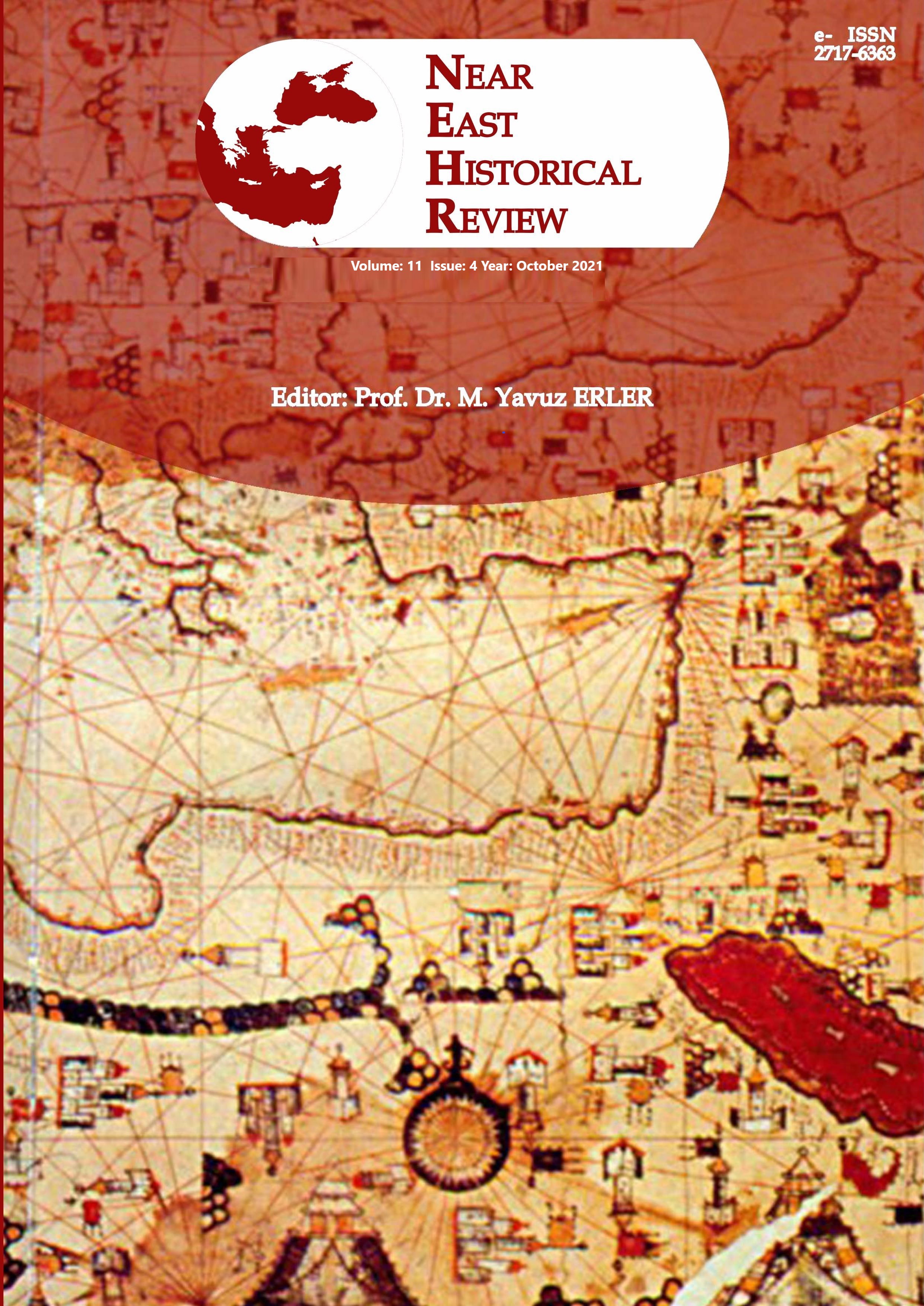Author :
Abstract
"Ölüm Kardeşliği"nin kurucusu olduğu iddia edilen kişi, antik Atina'nın hatip ve devlet adamı Demosthenes'ti. Amerikan “Skull & Bones” (Kafatası ve Kemik) birliğinin hiyerarşik yapısı, Alexander Ypsilantis'in (Etnik-i Eterya) Philiki Hetareia’da yönetsel yapıdaki genel delege olarak atanmasından sonraki oluşturduğu birlikle hemen hemen aynıdır. Aynı şey Amerikan “Bones” birliğinde de görülür. Amerikan Kardeşliği'ni sağlayacak olan birlikler ve bu birlikleri gelişletmek, elbette, bu makalenin kapsamı dışında olacaktır. Güney Yunanistan'da Bağımsızlık Savaşı başlar başlamaz, (Alexander) İskender'in küçük kardeşi ve bir Rus ordusu subayı olan Demetrios Ypsilantis Mora'ya ulaştı. Ardından, kendisini bağımsızlığa kavuşan Mora ve Yunanistan anakarasının askeri ve siyasi lideri olarak ilan etti. Kendi liderliğini ilan ettikten sonra “Skull and Bones” (Kafatası ve Kemik) rozeti ile siyah elbiseler giyen yeni bir “Kutsal Tabur” kurdu. Aynı zamanda Philiki Hetaireia'nın siyah-beyaz-kırmızı olan ve “Zümrüd-ü Anka Kuşunun” bayrağını göndere çekti. Mora'daki Yunan ordusunun başkomutanı Theodoros Kolokotronis'i de “siyah-beyz-kırmızı” bayrağın altına girmeye davet etti ve onu ikna etti. Ancak ansızın bu bayrağın renklerinde bir değişim meydana geldi. Yunanistan geçici idaresinin “Yürütme Organı Başkanı” olan Alexandros Mavrokordatos, 15 Mart 1822'de, “siyah-beyaz-kırmızı” Etniki Eterya bayrağı yerine sadece “mavi ve beyaz” renkli bir bayrağın kabulüne ilişkin kararnameyi yayınladı. 1821 Yunan Devrimi, dünya çapında bir komplonun ürünüydü. Bu komplonun kahramanları Rusya’da “Decemberist” (Aralık Devrimcileri) ile ürkütücü bir isme ve şöhrete sahip olan Amerika’daki “Skull and Bones” (Kafatası ve Kemik) gizli örgütüydü. Yunanistan'ın milli marşının, günümüzde bile geçmişteki bu örgütlerin söylemlerini yansıtması dikkat çekicidir. Amerika’daki kafatası ve kemik sembolünü kullanan kardeşlik cemiyetinin motiflerinin ileride Nazi Almanyasının gizli teşkilatlarına da ilham kaynağı olduğunu vurgulamakta yarar vardır. Çalışmamızda Amerika ve Rusya’daki kardeşlik cemiyetlerinin Yunan bağımsızlık savaşı ile olan bağlantısı ele alınacaktır.
Keywords
Abstract
The alleged founder of the “Brotherhood of Death” had been Demosthenes, the orator and statesman of ancient Athens. The hierarchical structure of the American “Skull & Bones” society is almost the same as that of the Philiki Hetareia after Alexander Ypsilantis was appointed “General Delegate of the Authority”. The same occurs in the American “Bones”. To enlarge upon the American Brotherhood would be beyond the scope of the present essay, of course. As soon as the War of Independence was triggered off in Southern Greece, Demetrios Ypsilantis, Alexander's younger brother and a Russian army officer, reached the Peloponnese. Then, he considered himself the military and political leader of the risen up Morea and Mainland Greece. Accordingly, he formed a new black-dressed “Sacred Battalion” with the Skull and Bones badge, of course. Simultaneously, he hoisted the black-white-red Phoenix flag of Philiki Hetaireia and persuaded the commander-in-chief of the Greek army in the Peloponnese, Theodoros Kolokotronis, to raise it as well. Suddenly, there was a thunderbolt out of the blue. Alexandros Mavrokordatos, President of the Executive Branch of Greece’s Provisional Administration, issued a decree on 15th March, 1822, by which the blue and white flag was substituted for the black-white-red Hetaireia’s one. The 1821 Greek Revolution was the product of a worldwide conspiracy. The protagonists were the Russian Decembrists and the American -allegedly- secret society with the macabre name “Skull and Bones”. It is noteworthy that the national anthem of Greece echoes the memory of this even nowadays active society. Needless to say, its emblem consists exactly of a skull and bones, and it is believed to be the branch of German secret society. In our study these bands of brother-hood of America and Russia would be scrutinized with a special reference to the Greek Revelation of Independence.
Keywords
- Iorga, Nicolae, Byzance après Byzance, Bucharest: Association Internationale d’Études du Sud- Est Européen, 1971. (First published in 1934.)
- ____, Histoire des relations russo-roumaines, Jassy: “Neamul Romănesc”, 1917.Paparrēgopoulos, Kōnstantinos, Epitomos Historia tou Hellēnikou Ethnous (= A Succinct History of the Greek Nation). Edited by Man. Prōtopsaltēs and Mich. G. Petridēs, Athens: “Dēmētrios Dēmētrakos”, 1952.
- _____, Historia tou Hellēnikou Ethnous (= A History of the Greek Nation), vols. I- XV, Athens: Galaxias, 1969-1971. (First published in 1860-1874.) Sarrēs, Neoklēs Osmanikē Pragmatikotēta (= The Ottoman Reality), vols. I-II, Athens: Arsenidis, n.d.
- Seignobos, Ch,m Histoire politique de l’Europe contemporaine. Évolution des partis et des formes politiques, 1814-1896, Paris: Armand Colin, 1903. Shaw, Stanford J. & Shaw, Ezel Kural, History of the Ottoman Empire and Modern Turkey, vols. I-II, Cambridge University Press, 1976-1977.
- Treptow, Kurt W. (ed.), A History of Romania, Iaşi: The Center for Romanian Studies & The Romanian Cultural Foundation, 1996.
- Zakythēnos, Dion. A., Hē Vyzantinē Autokratoria, 324-1071 (= The Byzantine Empire, 324- 1071), Athens, 1969.
- Enepekides, P.K. Rhigas-Ypsilanti-Capodistria (Athens: “Hestia” Collaros, 1965.
- Koukkou, Helenē E., Iōannēs Kapodistrias. Ho anthrōpos, ho diplōmatēs, 1800-1828 (= Ioannis Kapodistrias. The Man, the Diplomat, 1800-1828), Athens: “Hestia” Collaros, 1978.
- O’Meara,Patrick, The Decembrist Pavel Pestel. Russia’s First Republican, London: Palgrave Macmillan, 2003.
- Arsh, G. L, Taĭnoe obshchestvo Filiki Eteriya (= The Secret Society “Philiki Hetareia”). Translated into Greek by Serapheim Papadēmētriou, Athens: “To Laïko Vivlio”, 1966.
- Botzaris, Notis, Visions balkaniques dans la préparation de la Révolution grecque (1789-1821), Geneva: Librairie E. Droz, 1962.
- Despotopoulos, Alex., “Hē Epanastasē stē Moldovlachia” (= The Revolution in Moldavia and Wallachia) in Historia tou Hellēnikou Ethnous (= A History of the Greek Nation), vol. XII (Athens: “Ekdotike Athenon”, 1975), pp. 20-69.
- Goşu, Armand, Între Napoleon şi Alexandru I, Bucharest: Editura Academiei Române, 2008.
- Kissinger, Henry A., A World Restored. Metternich, Castlereagh and the Problems of Peace, 1812-1822 (Boston: Houghton Mifflin, 1957.
- Sifneos, Evrydiki, Imperial Odessa: Peoples, Spaces, Identities, Leiden: Brill, 2017.
- Sphyroëras, Vas. Vl., Ta hellēnika plērōmata tou tourkikou stolou (= The Greek Crews of the Turkish Fleet), Athens, 1968.
- Voges, Michael, Aufklärung und Geheimnis, Tübingen: Max Niemeyer, 1987.
- Troyat, Henri, Les compagnons du coquelicot, Paris: Flammarion, 1959.
